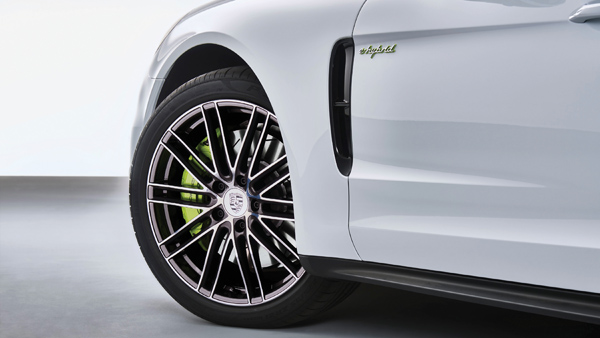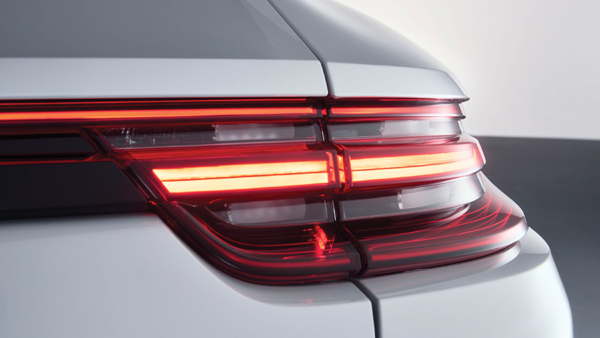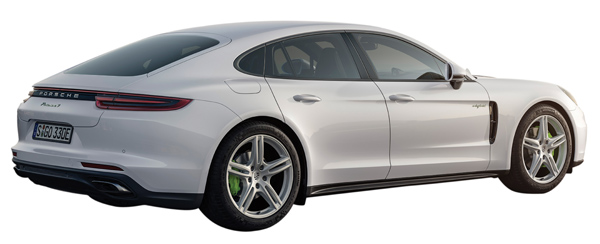
The new Panamera 4 E‑Hybrid
The new Porsche plug-in hybrid always starts in purely electric mode and drives without generating any local emissions within a range of 30 miles. And yet this Panamera too is a sports car among the luxury saloons: The all-wheel Porsche delivers a system torque of 700 Nm from stationary without hesitation. The four-door hybrid sports car breaks the 60 mph barrier in just 4.6 seconds. The torque is transferred to all four wheels and the standard three-chamber air suspension ensures an optimum balance between comfort and dynamism at all times.
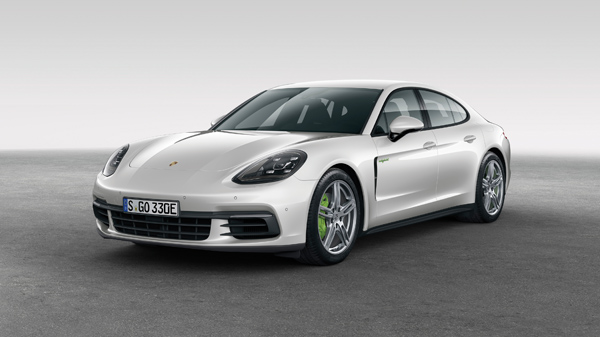
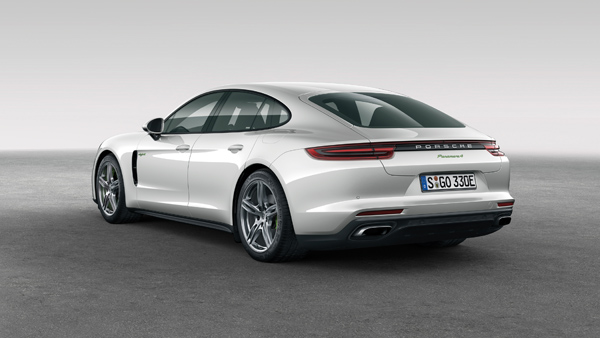
The superlative performance is no accident: The new Panamera 4 E‑Hybrid features a hybrid strategy never before seen in this segment – a strategy based on the 918 Spyder. The 918 Spyder is the fastest series-produced vehicle ever to circumnavigate the Nürburgring Nordschleife with a record lap time of 6:57 minutes.
As with the 918 Spyder, the power of the Panamera electric motor – 100 kW (136 hp) and 400 Nm torque – is made available as soon as the driver touches the accelerator pedal. On the predecessor model, the pedal needed to be pressed at least 80 per cent of the way down to unleash the additional power of the electric drive. Now, the electric motor and petrol engine interact in perfect harmony from the very outset. In the Panamera 4 E‑Hybrid, the electrical energy is also used to increase the car’s top speed. At Porsche, this new type of “E‑Performance” – more power, more driving fun, lower fuel consumption – is seen as the performance kit of the future.
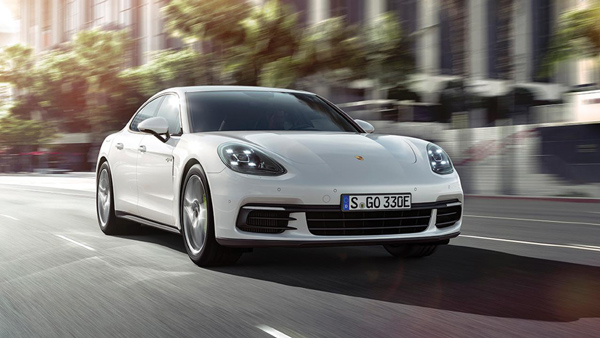
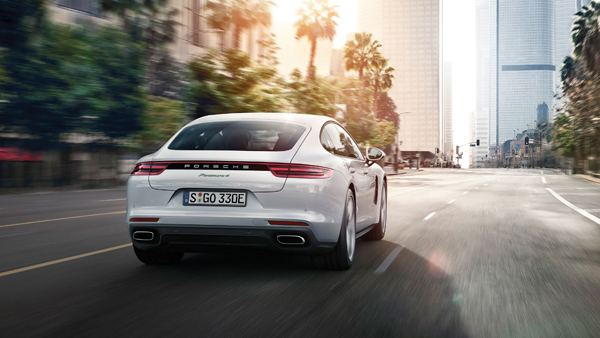
Together with the V6 petrol engine decoupler, the electric motor heralds the new generation of the Porsche hybrid module. In contrast to the electro-hydraulic system of the predecessor model, the decoupler on the new Panamera is actuated electro-mechanically by an electric clutch actuator (ECA), resulting in even shorter response times.
As on the other second-generation Panamera models, a new, extremely fast and efficient-shifting Porsche eight-speed Doppelkupplung (PDK) transmission is used to transmit the power to the all-wheel drive.
The electric motor is supplied with power via a liquid-cooled lithium-ion battery. And despite the fact that the energy content of the battery (which is integrated under the luggage compartment floor) has been increased from 9.4 to 14.1 kWh, its weight has remained the same. The high-voltage battery takes just 5.8 hours to fully charge via a 230‑V, 10‑A connection.
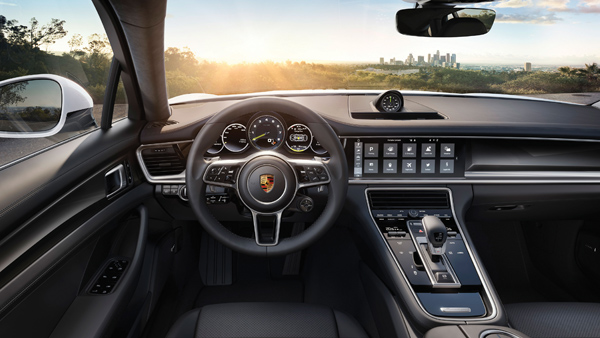

One highlight of the second-generation Panamera is the newly designed display and control concept in the form of the standard Porsche Advanced Cockpit with touch-sensitive panels and individually configurable displays. Two seven-inch screens either side of the analogue rev counter form the interactive cockpit, and, in contrast to the other versions in the model line, the Panamera 4 E‑Hybrid features a power meter tailored to hybrid operation.
A 12.3‑inch touchscreen functions as a central PCM control and display unit. The driver can access various items of hybrid-specific information both here on the dash and in the instrument cluster.
The highest level of drive performance is made available in the “Sport” and “Sport Plus” modes. The V6 biturbo engine is active continuously in these modes. In “Sport” mode, the battery charge is always maintained at a minimum level to ensure there are sufficient e‑boost reserve capacities when needed. “Sport Plus” mode is all about maximum performance and allows the Panamera to reach its top speed of 278 km/h. This mode also recharges the battery as quickly as possible with the help of the V6 biturbo engine.
The first units in Europe will be delivered from mid-April 2017 . These four models represent a fusion of sports car and passenger car to form a Gran Turismo concept offering a globally unique combination of dynamism and comfort.
Panamera 4 E‑Hybrid: combined fuel consumption 2.5 l/100 km; CO2 emissions 56 g/km; energy consumption 15.9 kWh/100 km
Panamera Turbo: combined fuel consumption 9.4 – 9.3 l/100 km; CO2 emissions 214 – 212 g/km
Panamera 4S: combined fuel consumption 8.2 – 8.1 l/100 km; CO2 emissions 186 – 184 g/km
Panamera 4S Diesel: combined fuel consumption 6.8 – 6.7 l/100 km; CO2 emissions 178 – 176 g/km

